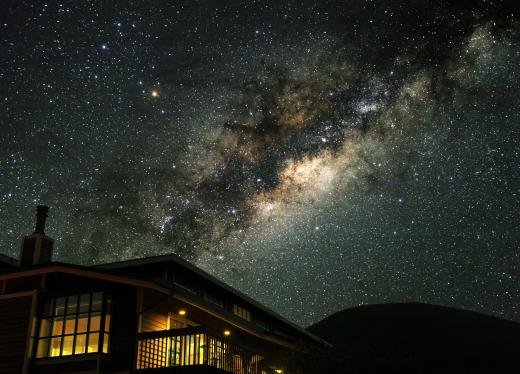What is a Hobbit Galaxy?
 Michael Anissimov
Michael Anissimov
The term "hobbit galaxy" has been used recently to refer to galaxies even smaller than dwarf galaxies, which contain a few million stars. Hobbit galaxies only contain a few hundred thousand stars, similar to a large star cluster within a galaxy. By comparison, our own Milky Way contains 200-400 billion stars, more stars than there are galaxies in the universe.
The term "hobbit galaxy," being new, has not yet acquired a distinct definition. The only galaxy that unquestionably fits the label is Leo T, a galaxy discovered as recently as 2007 during the Sloan Digital Sky Survey. The designation "T" indicates that Leo is a transitional object between a galaxy and something else. Located 1.4 million light years distant, Leo T is beyond the gravitational influence of the Milky Way. Leo T has a luminosity equal to only 50,000 Suns, unprecedented for a galaxy.

The Milky Way is also orbited by at least seven small galaxies usually called dwarf galaxies, which may actually qualify for hobbit galaxy status. As our telescopes get more sensitive, the instrumentation available to the field of extragalactic astronomy improves, and we learn more about the fainter, more obscure types of galaxies. Current cosmological theories predict the existence of 5 to 10 times as many dwarf galaxies in our Local Group as we currently observe.
Two qualities of Leo T in particular are relatively unusual: first, its diameter is roughly 600 light years, very large in comparison to the diameter of a similar-mass cluster of stars within a galaxy: only about 100 light years. This indicates that the stars in Leo T are embedded within a large blob of dark matter. The second unusual thing about Leo T is that it contains relatively young stars, unusual for previously observed dwarf galaxies which typically host ancient stars. Leo T also begs the question: how small can a galaxy be?
AS FEATURED ON:
AS FEATURED ON:











Discuss this Article
Post your comments